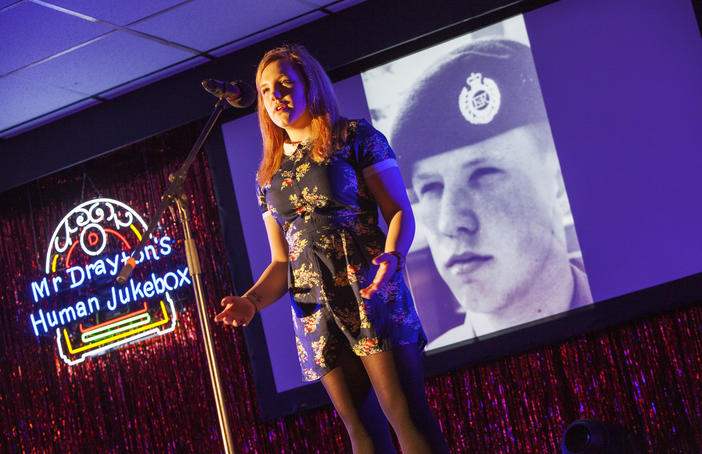Blog Post
New report highlights importance of working with communities to create sustainable future for the arts
Today we publish Faster but Slower, Slower but Faster summarising learning and insights from the Creative People and Places programme to date.

Faster, but Slower, Slower, but Faster highlights how Creative People and Places is increasing connections to culture and creativity and contributing to social change by inviting people to choose, create and take part in brilliant art experiences where they live. The report, written by Mark Robinson from Thinking Practice, draws on analysis of commissioned research and resources relating to the programme.
Key findings include:
- The process of delivering a successful CPP project must be collective and collaborative, with the right time invested into it
- People previously not active in the arts will engage if the work is relevant and useful to them, their lives and where they live
- Change is possible by working with people not on them, and by involving non-arts partners and taking an asset-based approach
The report also suggests that CPP’s participatory approach to culture and creativity could be a model for the future of arts engagement, one that is more democratic and that challenges traditional arts models. This is particularly pertinent in the current climate of political, economic and social uncertainty.
Initiated by Arts Council England, Creative People and Places launched in 2012. Since then it has created over 1.2 million engagements and worked with over 1,000 partners, with 90% of audiences from lower or medium engaged groups.
CPP works with a diverse range of partners including health authorities, local businesses, schools, bus companies, community and voluntary groups, sports clubs, housing associations and local authorities. The report emphasises the importance of working with these non-arts partners to build audiences and broaden networks; the programme is challenging notions of where the arts live and developing arts programmes that have the potential to thrive for many years to come.
In addition to arts engagement, the report also highlights the impact of CPP in terms of confidence, well-being and social capital. These benefits are connected to helping people feel more confident and proud of where they live.
This is the second learning summary for Creative People and Places following Building Whilst Flying, which was released in 2015. Its title, ‘Faster but Slower, Slower but Faster’, is inspired by record producer Martin Hannett who coined the phrase.
Mark Robinson comments:
‘My title attempts to embrace contradictory dualities within CPP. Excellence of product and process. Depth and breadth. Leadership and co-creation. Big splashes and careful partnerships.’
Arts Council England invested £37m of National Lottery funding into the 21 Creative People and Places projects. It has committed to investing a further £20m between 2015 and 2018 and has so far awarded in excess of £12m over two further rounds of funds for existing places.
Darren Henley, Chief Executive of Arts Council England comments:
'The crux of Creative People and Places has always been about listening to people and working with them to develop cultural experiences in their local communities. This takes time and patience, but it’s exciting to see from this report that this work is paying off and that people are genuinely engaging with these cultural programmes because they are relevant to them, their lives and to where they live.'
The report was commissioned by the Creative People and Places network. CPP is an action-learning programme; ongoing learning, reflection and evaluation is central to its work.
The full report can be found at: www.creativepeopleplaces.org.uk/our-learning/faster-slower-slower-faster
You can read a range of responses to the report on the links below:







